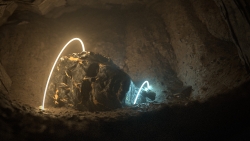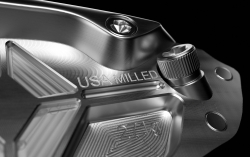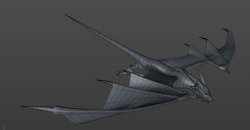-
Posts
17,957 -
Joined
-
Days Won
733
Content Type
Profiles
Blogs
Forums
Gallery
Pipeline Tools
3D Wiki
Plugin List
Store
Downloads
Everything posted by Cerbera
-
Please complete your profile information. Plugin support is available from the plugin creator, so I suggest you go direct to Merk for this issue. CBR
-
-

HB Modelling Bundle now fully compatible with R20-23.
Cerbera replied to Cerbera's topic in Tips | Tricks | Mini Tutorials
Thanks for clarifies, 3DP 🙂 CBR -
Those of you who already bought it will have received your update links earlier today, but thought I'd do a general post to reiterate the ongoing brilliance of the HB Modelling bundle scripts, and the continued support and development of them by Holger, who must be something of hero to the modelling world by now 🙂 Certainly his scripts have made my job as principally a modeller in Cinema considerably faster, easier and more rewarding on a day-to-day basis ever since I first bought the kit for R11.5, and I would like to take this opportunity to publicly thank the author for supporting and developing it for all this time at no additional charge, which is both rare, welcome and very much 'above and beyond' in this day and age... If you don't already have it, and are remotely serious about modelling in Cinema, I still can't recommend this plugin enough. Features like Quad-capping, Even distribution, Surface-preserving Points to Circle, Surface-preserving Relax Mesh, Straighten Edges, Smooth edge, and the fabulous Re-topo setup continue to be real winners that make a genuine every-day difference to using Cinema as your principal modelling program. 60+ additional scripts are similarly useful, making this tool kit exceptional value for money. More info available below... https://helloluxx.com/product/hb-modellingbundle-for-cinema-4d/ Happy modellings everyone, and thanks again Holger for the inspirational work ! CBR
-
I'd bloody hope so !! 🙂 CBR
-
Yes you can import, but not get a generated mesh out to the legacy OM, hence the tech demo aspect of that system. CBR
-
I get that you're cross @Tamtan but pls watch your language. CBR
-
Hey @Igor Any idea why some questions have the solved / answered functionality, and others (like the one linked below) don't ? CBR
-
VERY pleased with the remesher in R23, and also that of those available, they went with the instant meshes development, which is more useful than most due to its ability to use splines to guide poly flow. It won't save your hard surface CAD models (nothing can automatically yet) but it's a VERY helpful thing to have natively in the generators list... AND you can nest them, meaning that you can do simply ridiculous downstaging, with (limited) edge flow control at multiple levels, which has got to be a win for any serious modeller... CBR
-
Yeah very cool, and getting better all the time... CBR
-
There's always a better something somewhere, but sometimes you just like the one you've got ! 🙂 Of course I do have HB modelling bundle, and am fully aware of all the remaining weaknesses in Cinema's modelling toolset, but TBH I don't find any of them too problematic on a day-to-day level. I model an enormous variety of stuff, and the amount of times I am left genuinely stuck because Cinema can't do something remain very minimal and it is exceptionally rare that I find a problem I can't think my way around using the tools that are available to me here in C4D. I guess I have been using it for so long now that I have just found all the ways round the main problems modellers in Cinema typically face. Also there is a general ramp of improvement to Cinema's modelling tools, and there have been enough improvements in that department (some of which were and remain best in class) over the years to keep me interested and... still here 🙂 Also I remain aware of the continuing problems in other software. For example, Max, after 25 years of trying still hasn't got a basic knife tool that doesn't add a ton of unwanted irrelevant vertices whenever you use it ! And a surprising number of its coolest modelling features are 3rd party scripts and add-on shelf tools ! AND your models look like cr@p in there all the time you are working on them ! I could go on, but don't want to derail the thread with a load of largely subjective gripes about every other thing out there ! So it's loads of little reasons really - Cinema is a very visually pleasing place to work, especially recently, the community are great, the cafe is great, the tools keep improving, and I am most comfortable and at home working in its environment, which I still like more than anyone else's. CBR
-
Yes, and impressed as I am by the improvements they have made I just can't get with it. I still don't like the interface, the shortcuts, the look of geo, and a great number of other things about it. As of right now, Cinema is definitely where I prefer to be. Having said that, I am not mad keen on Maya's GUI either. And I only don't mind Max's because I have so much experience there myself, and it was where I started. Modo I do like the look of more than both those, but nothing quite as much as Cinema 😉
-
But let's say Pixar for example really want you and your skills, and you tell them you have the indie license, so surely they just go - 'right - well we have 50 pre-paid seats of full Maya, we'll grant you one of those for the duration of the project' ? Or is there some reason I don't know about that stops them doing that ? And surely Autodesks's power cannot extend to demands about any artist fees you earned whilst not working under the Indy license ?
-
And if you do get the call, surely you are the only person they can compel to share what you specifically got paid - the company that paid you are under no obligation at all to give them that project-wide info because the contract is not with them - it's with the artist. Or am I missing something obvious here ? CBR
-
No. I am a freelance modeller / trainer mainly - neither of those things takes me over the 80,000 a year or 100,000 per project. I'd also be interested to know in how exactly they could check ? The budgeting information from projects isn't usually publicly available, and surely the only person they could compel to reveal actual figures was the freelancer with the license, and that's only going to tell them what that one person got paid ? I also think you could still take part in bigger projects, but they are likely to be able to assign you a full studio-owned (rented) seat while you work for them, so potentially not a problem there either... CBR
-
If such a time ever comes when I leave Cinema (which isn't looking immediately likely) then this is definitely a viable option. Making stuff in Maya might be a bit like painting a hallway through a letterbox, but nobody can deny it has ALL the tools, specially in the modelling and rigging departments, though it is strong pretty much everywhere TBH... I have traditionally massively disliked Autodesk and the things they do, but this sort of exceptionally reasonable pricing definitely makes me dislike them a bit less. But only a bit because I bet they only did it because they felt they had to 🙂 CBR
-

Product Visualizations - Golf Clubs and Grips
Cerbera commented on kanec's gallery album in Final Renders
-
-
Don't know how important such things are to you, but if it was me, I'd think a bit more about sound design and get a bit more subtlety in there. For example, if a skeleton character is aprox 10 ft away from you (the camera) in a scene then any bone creaking foley effects should sound like they are also at that distance, rather than sounding like they are happening an inch from your ear in an an-echoic chamber ! Also music track is trying to be 'seriously' horror-style, and your animation is very much about the humour, so I wonder if that isn't sending some mixed messages to the viewer about what this is trying to be. You wanna try and find one of those Hanna-Barbera style tracks, which are much more 'comically spooky'. You know the sort of thing - where maybe pizzicato strings track the footsteps of a skeleton. But hey, it is possible to over-think these things, so feel free to ignore my ramblings if it's not something you are focused on 🙂 CBR
-
-
From the album: CBR Model Wires
© ®luminetrics
-
From the album: CBR Model Wires
© ®luminetrics
-
From the album: CBR Model Wires
© ®luminetrics
-
From the album: Golf Clubs & Wraps
© MORE - Lab Golf - DominantGolf LLC















